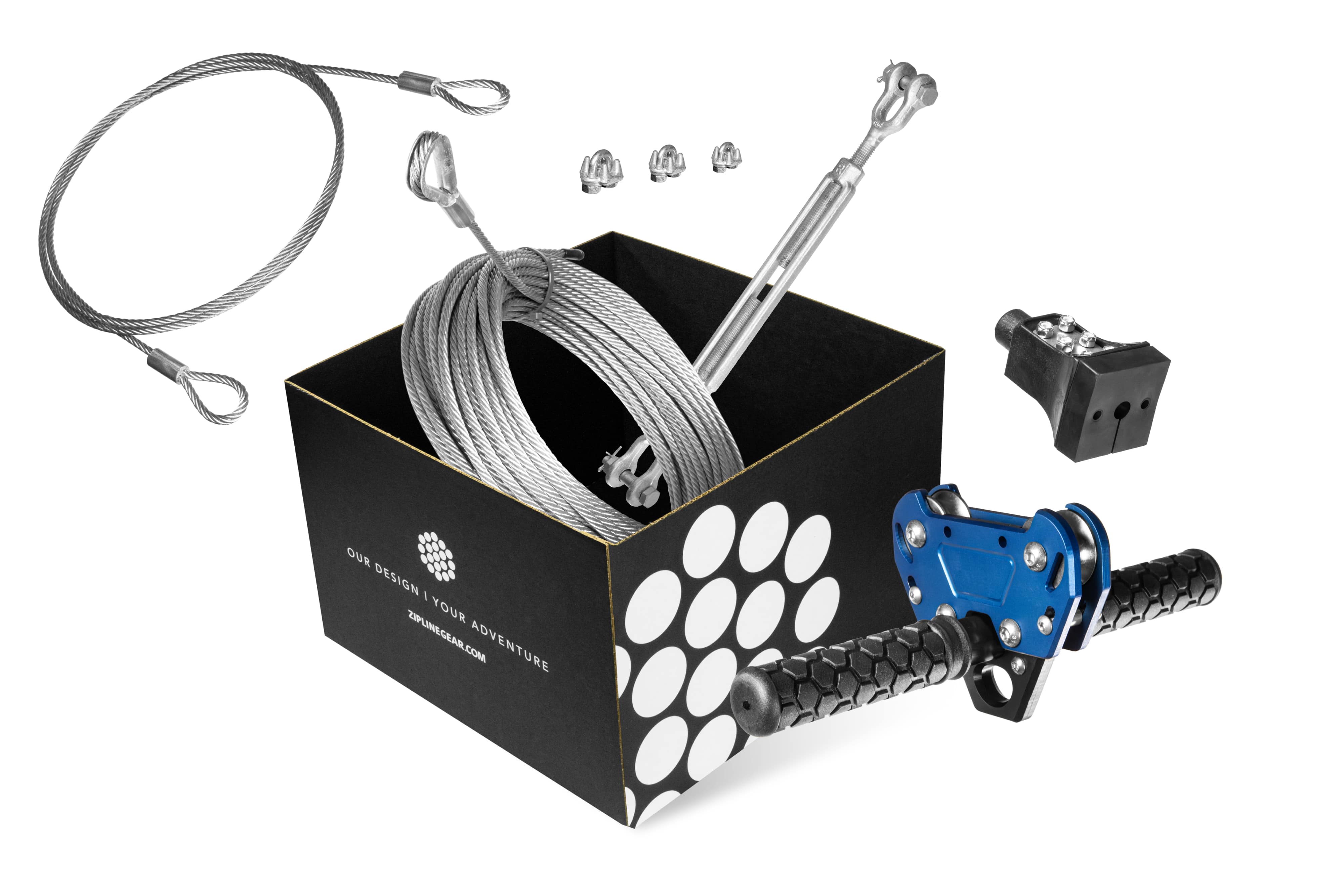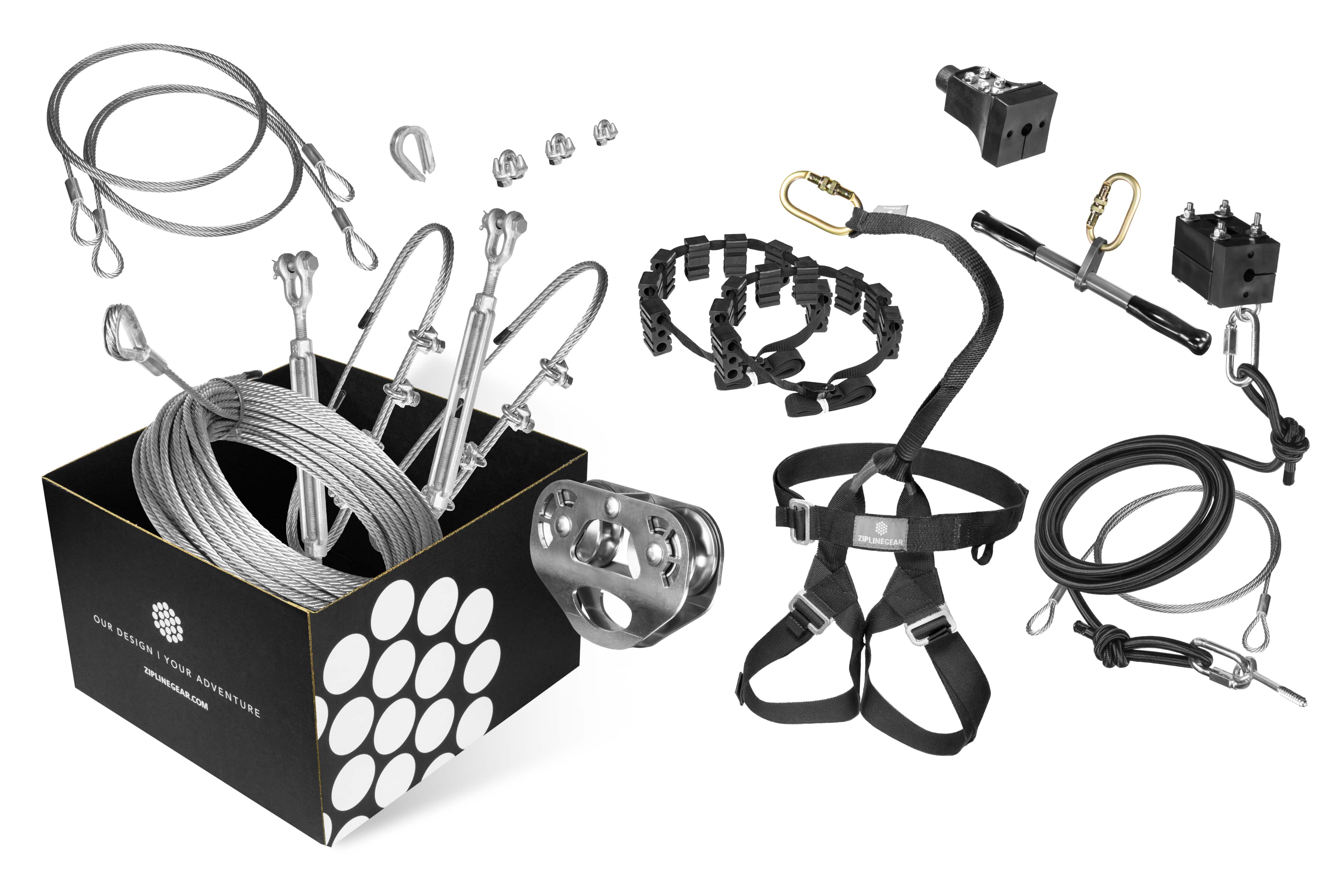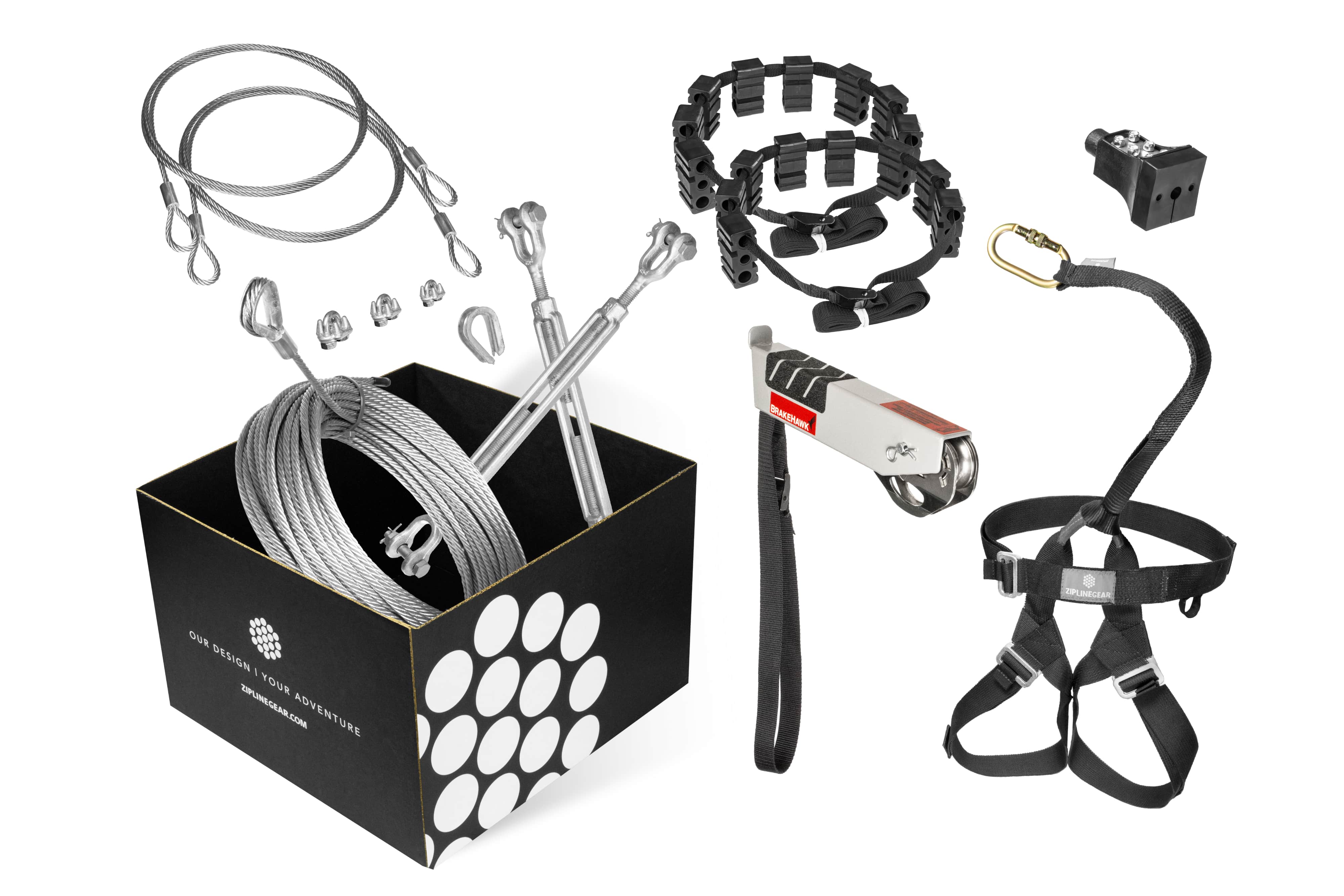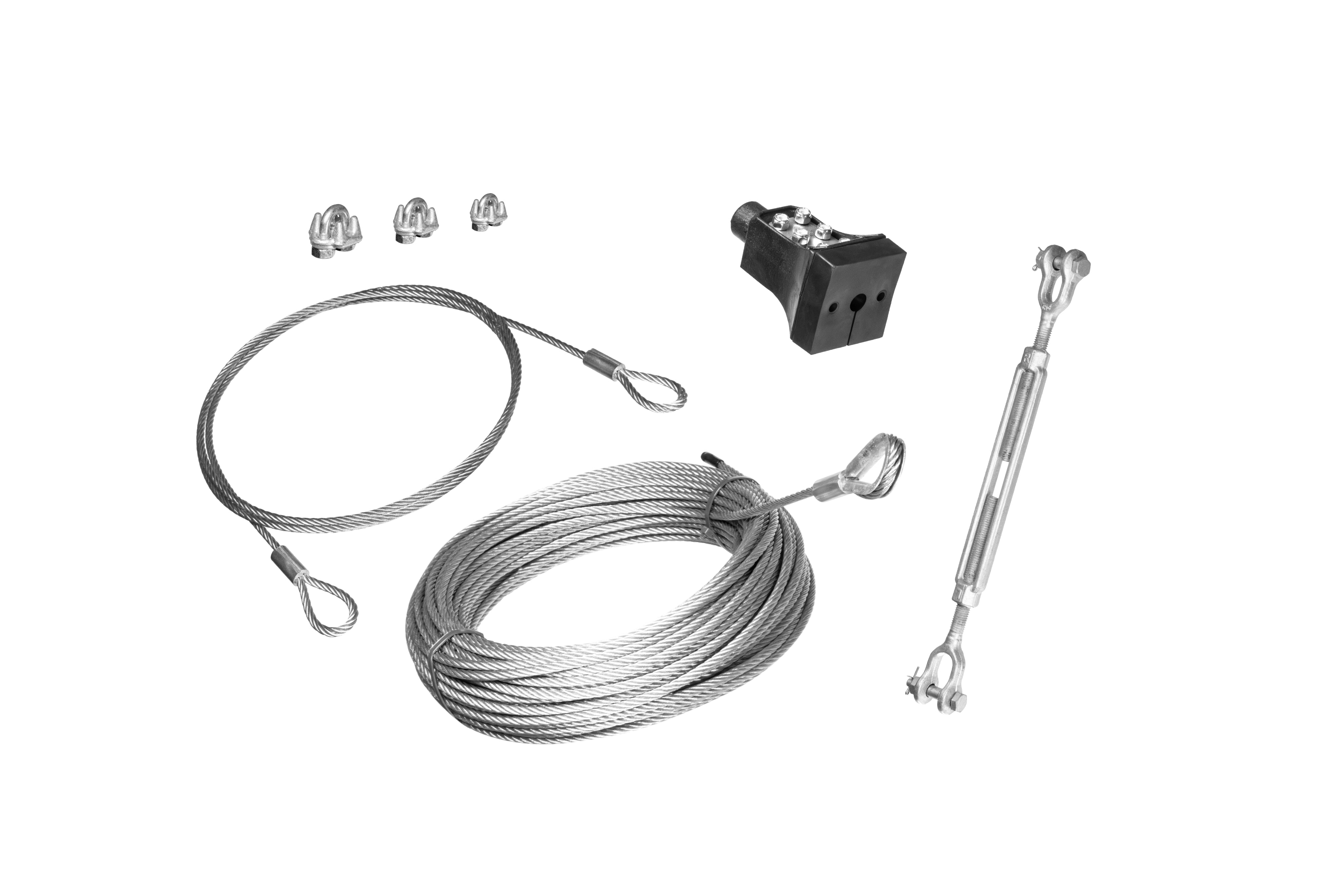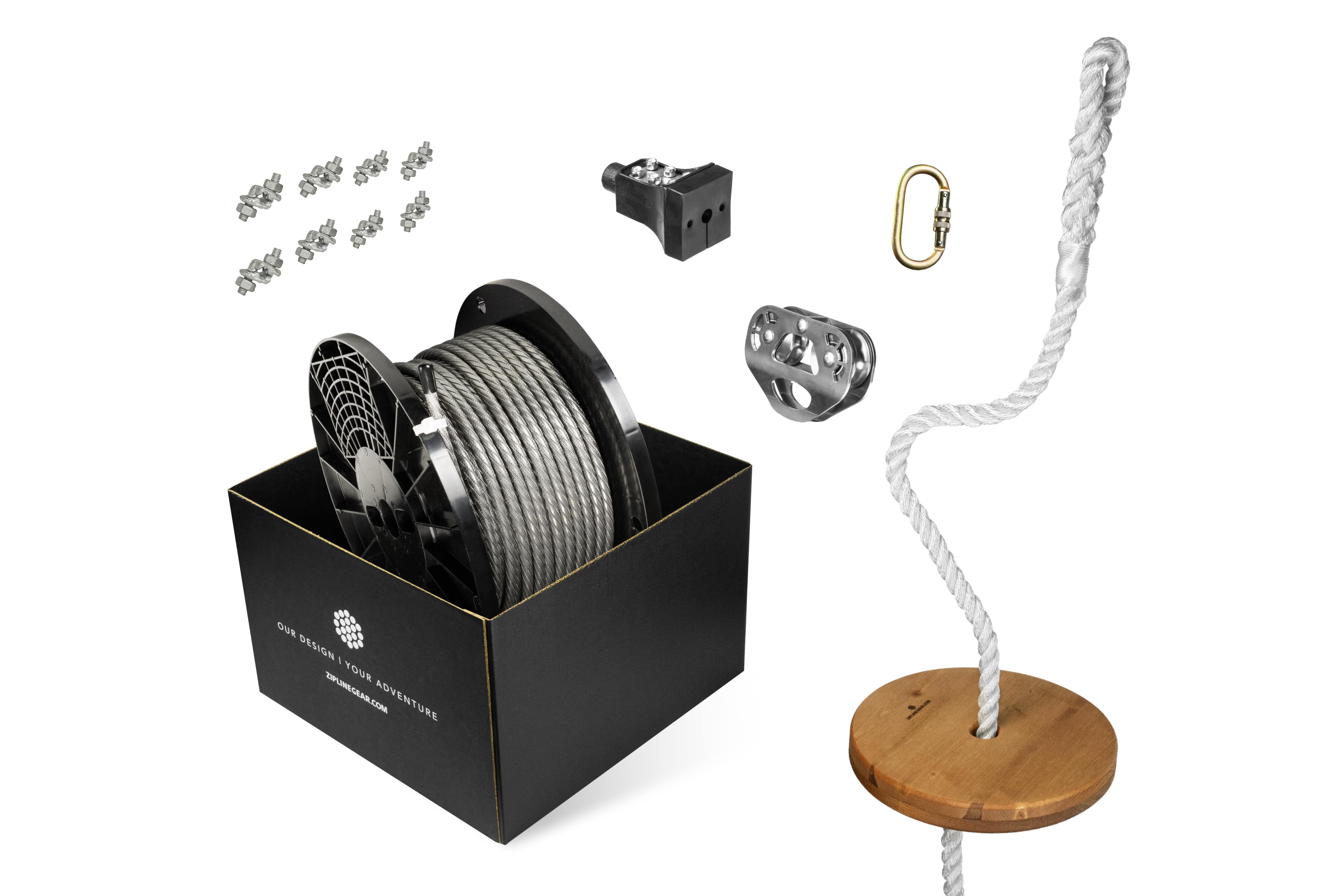Understanding Cable Stretch
Cable stretch is generally not a top-of-mind concern for backyard zip line construction, but it may be helpful (or just interesting!) to understand the two types of stretch experienced by a zip line cable. The first is structural stretch, also known as constructional stretch, which refers to the permanent tightening of a cable’s strands when the initial load is applied. The spiral, or “lay” of the cable gets slightly longer as the individual wires draw closer together. The second is elastic stretch, which refers to the temporary, physical elongation of the individual strands under load. Structural stretch is a one-time effect that needs to be accounted for during the installation process, elastic stretch is an ongoing effect that contributes to how zip lines function dynamically.
Again, an in-depth understanding of cable stretch is not a prerequisite for good zip line construction (any reputable zip line manufacturer will account for it in their designs and installation procedures), but if you just like to know how things work, read on!
Structural Stretch
Structural stretch, the permanent tightening/lengthening of a cable’s lay, can be observed in how a newly installed zip line cable will hang significantly lower than originally installed, after weight testing and the first few rides have been completed. On galvanized aircraft cable (the class of wire rope most often used for zip lines), the structural stretch is typically well under 1% of its original length. This can translate to several inches over a zip line’s length, however, and create drastic changes in the traveling height of a rider. Fortunately, most of the stretching occurs immediately upon loading - once accounted for during the initial setup and tuning, the structural length (and rider elevation) will remain pretty static. Many zip lines include an in-line turnbuckle for making small, seasonal adjustments to compensate for structural cable stretch.
Elastic Stretch
Elastic stretch is the physical elongation of individual wires in the cable under a load. Unlike structural stretch, elastic stretch is temporary and the cable retracts back to its original length once the load is removed. This kind of stretch is repetitive and occurs every time the zip line is ridden; it is also proportional to the load applied, which causes riders of different weights to travel at different heights. This is one of many reasons why a zip line should only be operated within the weight range that it has been designed and tested for: riders outside that range will travel at heights and speeds that may not be safely accounted for. The most common scenario is an adult riding a zip line designed for children and scraping the ground mid-ride; other scenarios include colliding with obstacles above or below the normal zip line path, overpowering a zip line’s braking system and crashing into the end, or getting stranded mid-cable without enough momentum to reach the end.
At the end of day, cable stretch is more the concern of a design engineer or commercial installer. When in doubt, purchase your gear from a reputable company, carefully follow the manufacturers’ instructions and testing procedures, or just give us a call and we’ll walk you through it!
To learn more, check out these related articles:
Speed and Weight Testing
- Choosing a selection results in a full page refresh.
